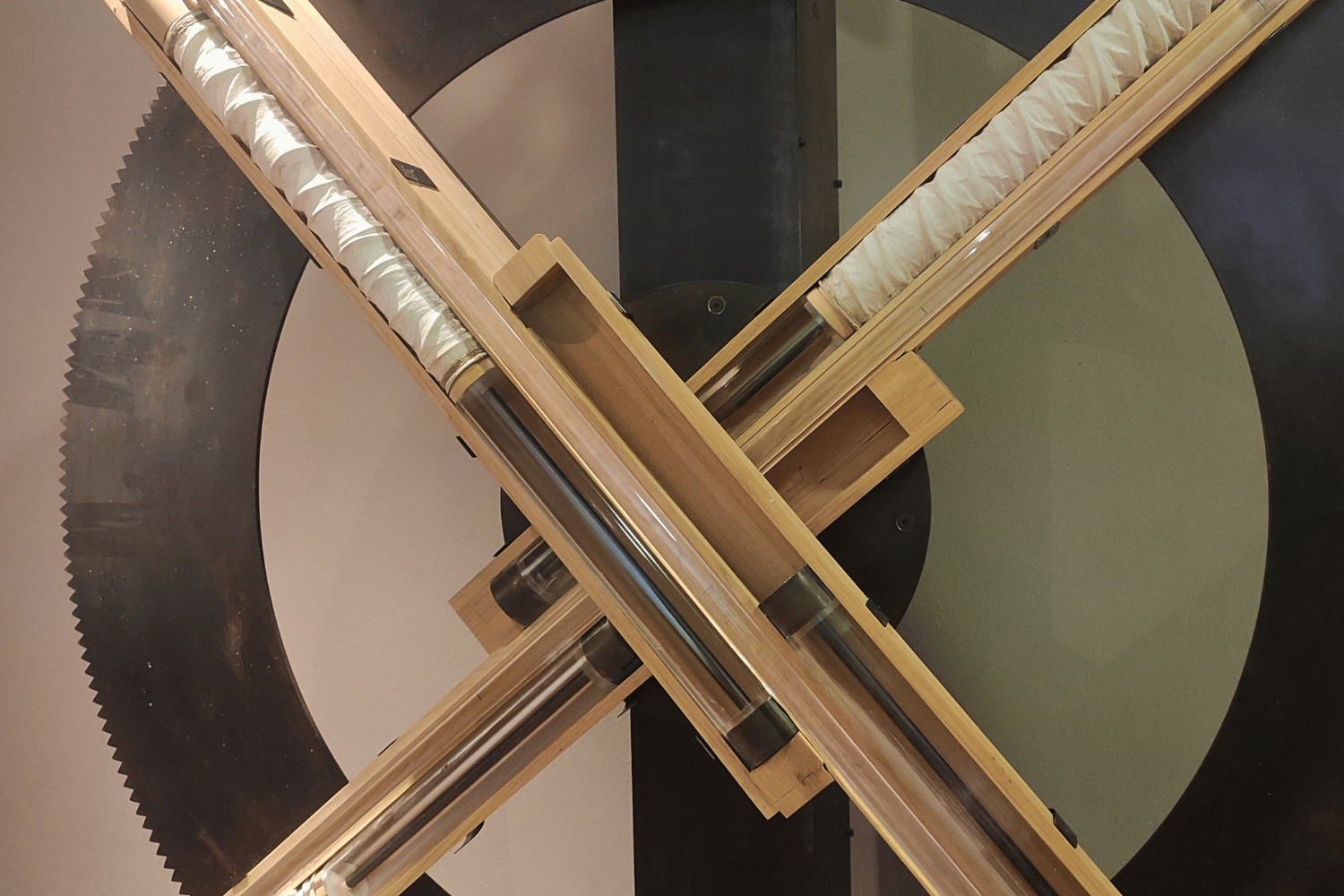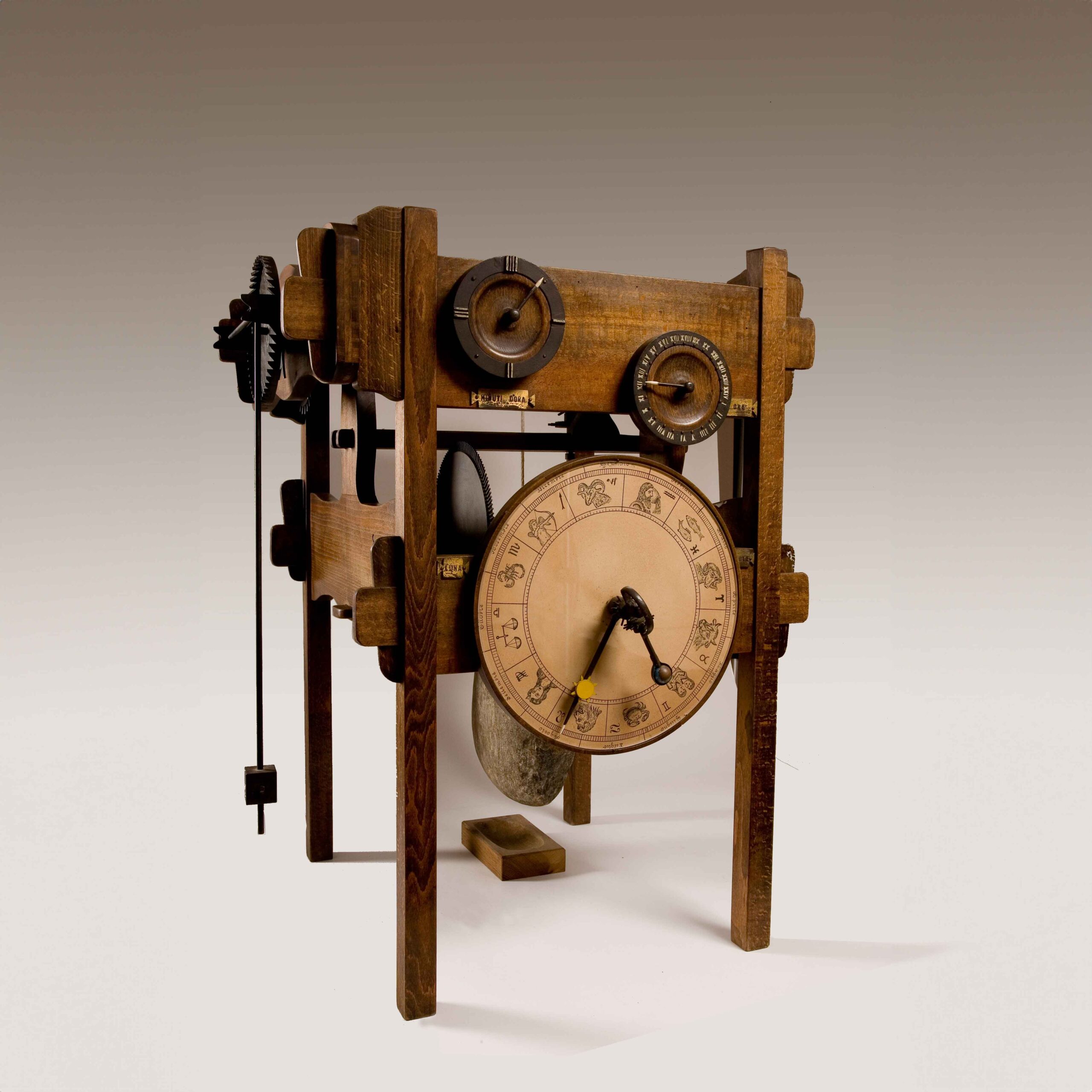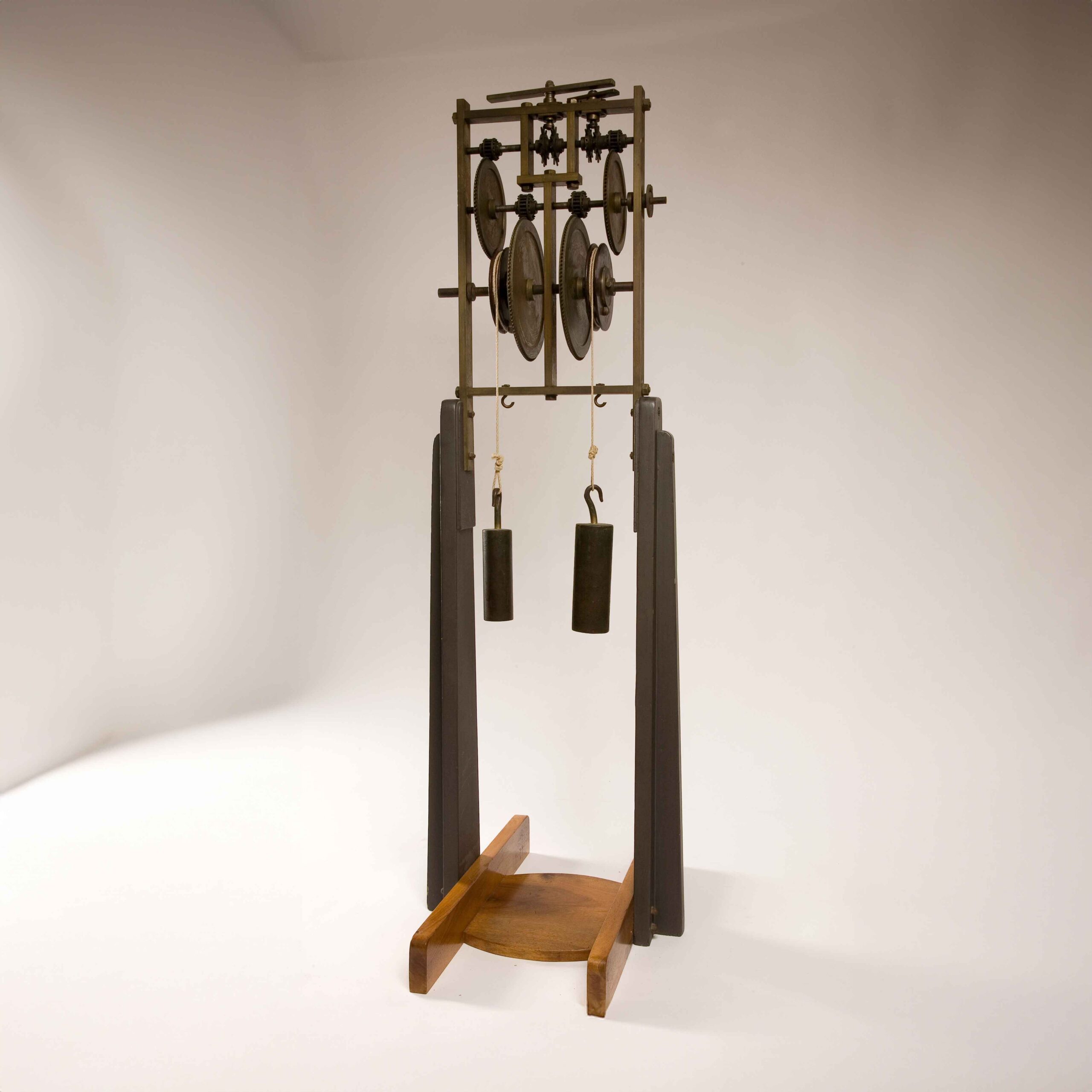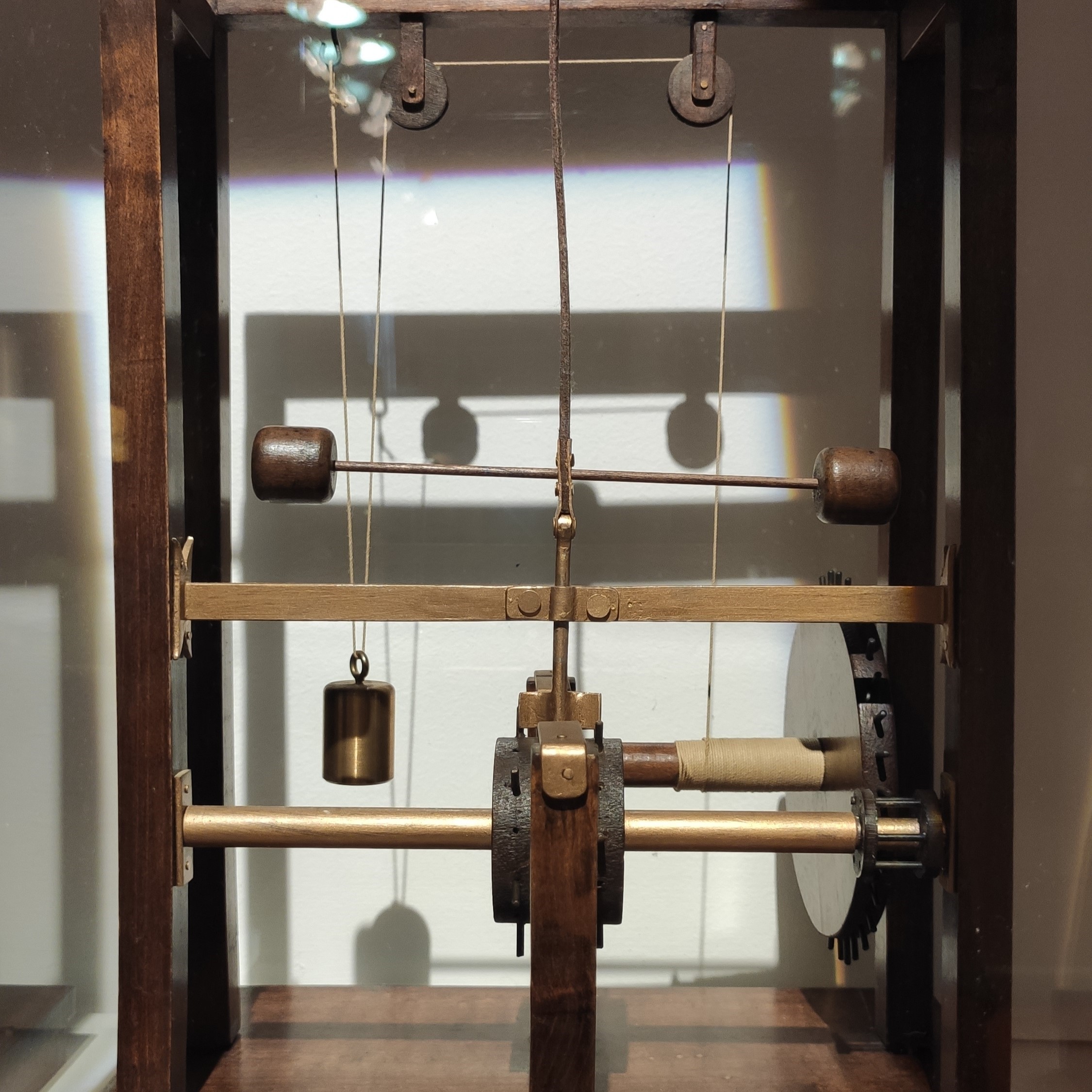Among Leonardo’s many attempts to conceive a perpetual motion machine, this wheel stands out for its original use of pistons and liquids in a closed circuit, regulated by a clockwork mechanism.
Described on folio 1062 v of the Codex Atlanticus, the hydromechanical perpetual wheel consists of a rotating frame on which two piston devices are mounted in an orthogonal arrangement. Each device includes a pair of opposing cylinders connected by an S-shaped hydraulic conduit, within which movable pistons operate. During rotation, the weight of the pistons pushes the liquid from one cylinder to the other, creating a dynamic imbalance that drives the wheel’s motion.
Leonardo envisaged installing up to four modules on the same axle, with an impulse every 30 degrees of rotation. In a note, he also considers the possibility of using three modules, staggered by 60 degrees. His attention to technical detail is remarkable: to prevent the bellows’ leather from deteriorating in contact with water, Leonardo suggests using wine as the working fluid.
The system is completed with a foliot escapement, the same mechanism used in contemporary clocks, to regulate the wheel’s rotational speed. A similar version of the wheel also appears in Madrid Codex I (f. 74 r), where Leonardo describes this device as “moto soffistico”—theoretically fascinating, but impossible to make work in practice.



